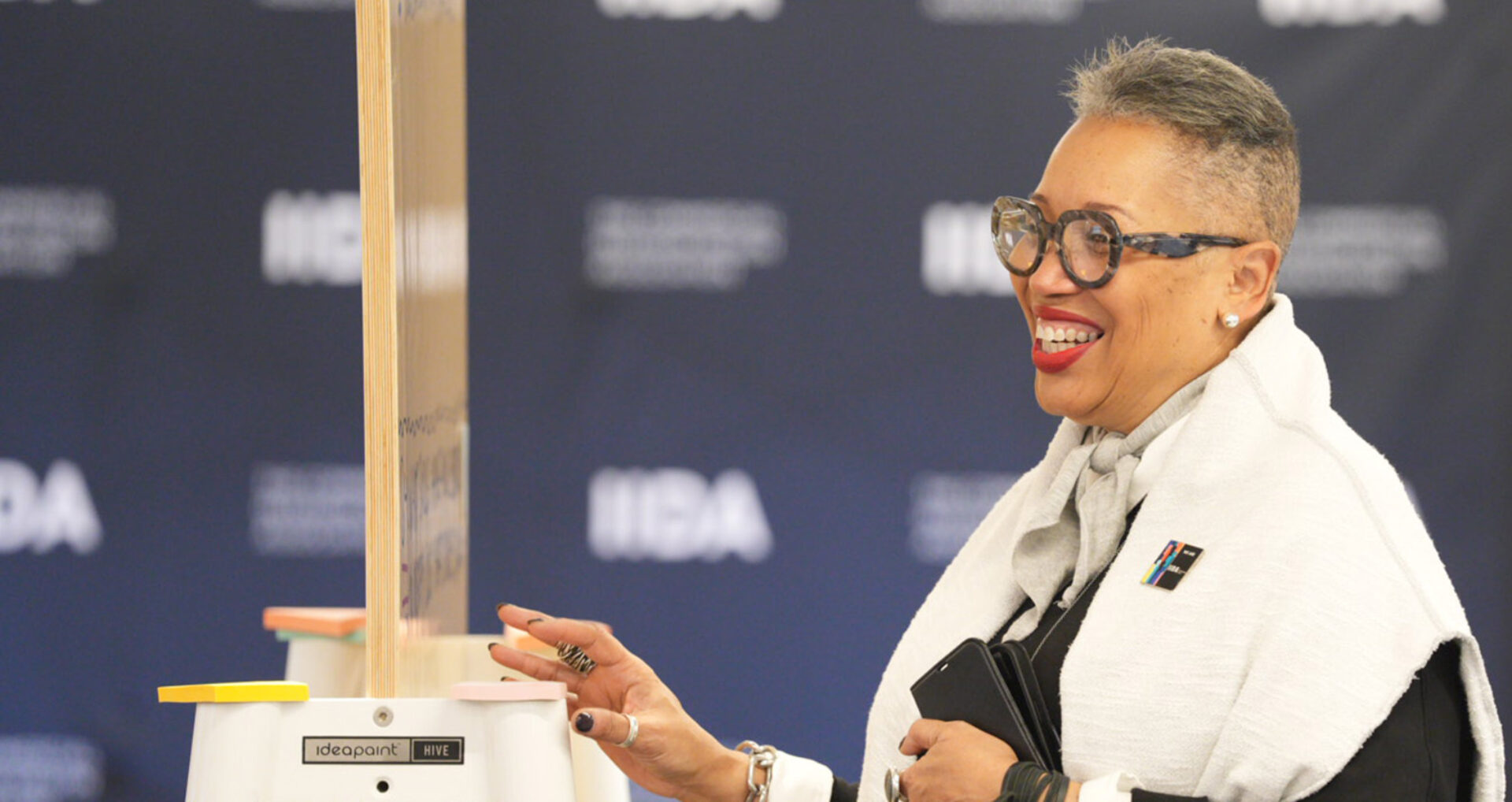Call to mind the best boss you’ve ever had, or the most effective leader you’ve encountered. What made that person so skillful? Maybe it was confidence or competence, compassion, or masterful communication. Perhaps there were other qualities that were harder to pinpoint, but deeply felt.
Great leadership is less of a perfect equation (business sense + charisma = best boss ever?) and more a set of constants (strong ethics, general decency, resilience) paired with all sorts of variables. Every leader employs different strategies, depending on their environment and temperament.
We asked IIDA’s beloved, longtime leader, Executive Vice President and CEO, Cheryl S. Durst, Hon. FIIDA, to share her secrets and go-to tactics for successful leadership. Durst tapped into her well of deep knowledge—she has helmed IIDA for more than 25 years—to draw out tips leaders can harness at any stage, whether they’re just starting out or industry veterans.
Below you’ll find her brief, brilliant guide to great leadership.
—Nneka McGuire, IIDA director of content
(Below: Durst leads the 2022 Equity Council at NeoCon)

1. Be decent—and be real. Remember the simple things your mother told you about work and life: Be kind to the receptionist. Be authentic. And never, ever steal your colleagues’ food from the fridge. (This is a crime against the office community. Don’t be a criminal.)
2. Make sure your team understands the “why” and “who” of their work. It’s about tying purpose to culture. I think we’ve all met people who know exactly what they’re doing at work, but they don’t know why they’re doing it or who they’re doing it for or with. A leader should be adept at explaining the “who,” which is your culture, and the “why,” which is the purpose. People expect leaders to tell them the “how,” but it’s not necessarily a leader’s job to tell you how to do your thing, whatever your thing is. On that note…
3. Be a good coach. Every professional has a different “how,” a different method of processing information and achieving goals; a good leader is a good coach, helping employees find and hone their unique “how.” Be a thoughtful mentor, and as you teach, learn. Great leaders are lifelong learners.
4. Balance radical transparency with ethical discretion. I know, it’s a difficult needle to thread. Radical transparency is deeply valuable, yet most businesses operate on a need-to-know-basis, and that’s not without reason. Here’s how to think about being transparent without sharing information that damages team dynamics or compromises individual employees. For starters, you should never not disclose something because it makes you personally uncomfortable. There are situations, details, facts, and figures that every employee or stakeholder should have the right to ask about, but not every employee or stakeholder can ultimately access. For example, IIDA is a nonprofit, and every member has the right to access our audited financial statements. However, we don’t share every single aspect of our finances publicly, because that does no one any good. It’s tricky, but the best advice often lives in the nuance. Use discernment, common sense, a sense of civility, and sensitivity about what is ethical and moral to balance transparency with necessary circumspection.

Elliot Mandel

Elliot Mandel
5. Don’t confuse leadership with power. Those who hold power can get caught up in power, as opposed to leading. Very often, people will default to exercising power rather than exercising thoughtful and intentional leadership. Power is equated with control (and it can be a crutch), while leadership is a mode. A vibe, even. Leadership is about care, empathy, and vision.
6. Leadership isn’t an endgame. It’s not a destination, but a journey. Leaders learn —this bears repeating and is probably my biggest message. Once you become the boss, you’re not done; leadership isn’t a badge, but it is an evolution of a lifetime of experience. So don’t forget who you are, and don’t forget who you want to be.
7. Be a pragmatic optimist. Leaders lean heavily into optimism, joy, humor, and hope. But hope isn’t a strategy, so remember to be clear-eyed and cognizant of the realities of life, work, and everything in between—then temper that pragmatism with a liberal dose of laughter. Encourage those around you toward what is positive and possible.
Visit the table of contents for more Perspective: Business of Design.







